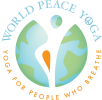Posture Practice - Going Deeper
Anatomy - Going Deeper
Healing Modalities
Stress Management
Breathwork - Going Deeper
Meditation - Going Deeper
Mindfulness
Subtle Body/Energy - Going Deeper
Yoga as a Business/Lifestyle - Going Deeper
Yoga Philosophy - Going Deeper
Plant-Sourced Living - Going Deeper
Backbend Review
Alignment
- Describe the ideal placement of the knees in reverse table top and bridge pose.
- Knees over ankles and hip width apart.
- Describe the alignment of the body in locust pose and opposing actions working together to lengthen (not compress).
- While lying on the belly with legs together and arms alongside the body, engage the core while lifting chest, head, and legs, and lengthening the sacrum away from the spine.
- Describe the ideal alignment of the shoulders and knees in bow pose.
- Ideally, shoulders and knees are lifted to the same height. (It doesn’t hurt anything if they are not even – just something to work toward to create a sense of balance.)
Anatomy
- What major muscles are engaging in both locust and bow pose?
- In addition to the core, primarily the muscles in the back side of the body are engaging – glutes, hamstrings, rhomboids, and other back muscles such as the erector spinae.
- What major muscles are being stretched in reverse table top and bridge pose?
- Front side of the body – primarily the hip flexors (part of quadriceps), rectus abdominis (belly), pectoral muscles (chest)
- What is the relationship between the sacrum and the knees/feet turning out in table top, bridge, and wheel poses?
- When the feet turn out it narrows the sacrum and may cause pinching; when feet are parallel or slightly turned in, it broadens the sacrum.
Assists
- How might one assist a student in reverse table, bridge, or wheel pose whose knees and feet are turning out?
- One might place their hands where their toes are pointed and ask them to inch their toes in/foot pointed forward. A block may also be squeezed between the thighs to help them keep the knees forward.
- How might one assist a student in cobra pose whose shoulders are rolling forward?
- With consent, stand behind the student with your feet on either side of their torso. To ground them, bend your knees, bringing your shins or knees to their upper back. Then use your hands to cup the fronts of the shoulders and draw the shoulders back.
- How might one assist a student in camel pose to create more length in their lower back?
- Sitting/lying down behind the student, place the ball of one foot on their sacrum, pressing downward, and the ball of the other foot between the shoulder blades, gently pressing upwards. You can also hold onto the student’s upper arms for more grounding (not pictured).
Props
- What prop can help a student whose hip bones are uncomfortable on the floor in locust or bow pose?
- A bolster or blanket under the hips/upper thighs.
- How might one use props for more stability in bridge or wheel pose?
- A block between the thighs; Hands on blocks that are against the wall; Strap around thighs.
- What prop might help a student with activating their inner thighs in locust, bow, bridge, or wheel pose?
- A block between the thighs
Modifications
- Describe some modifications and/or variations of bow pose.
- Hold both feet; hold one foot (half bow); use a strap to hold feet; hold ankle or pant leg; bend knees and lift legs without holding on.
- Describe some modifications and/or variations of wheel pose.
- Strap the upper arms; use blocks under the hands and at the wall; can be practiced lying on a folding chair with arms and head going through the opening; keep the elbows bent and the head on the floor, focusing on keeping elbows drawn in.
- What are some modifications of crescent lunge?
- Hands may be on floor or blocks, hands may be on thigh, hands may be overhead.
Sequencing
- Name or describe a prone (belly down) and a supine (belly up) neutralizing pose that can be done between back-bends.
- Prone Neutralizers: shake hips back and forth; wide legged child’s pose.
- Supine Neutralizers: feet on floor with knees bent and touching each other, feet wider than hip width; windshield wiper legs.
- What poses help prep the shoulders for the type of back-bends where the arms go up alongside the ears?
- Puppy Pose, Cowface Pose, Downward Facing Dog, Eagle Pose.
- When should a forward bend (for example, drawing the knees to the chest) be incorporated into a back-bending sequence?
- AFTER the peak back-bend.
